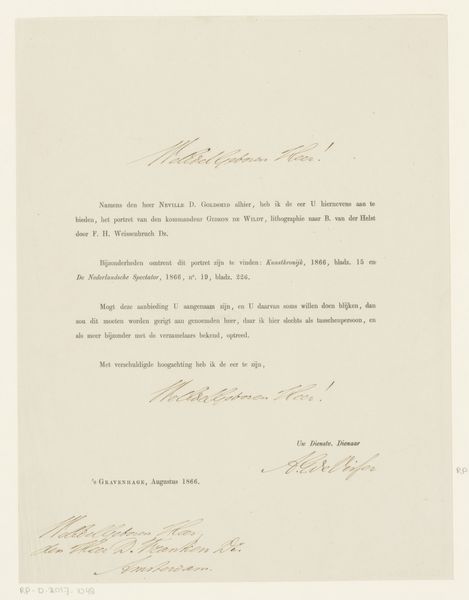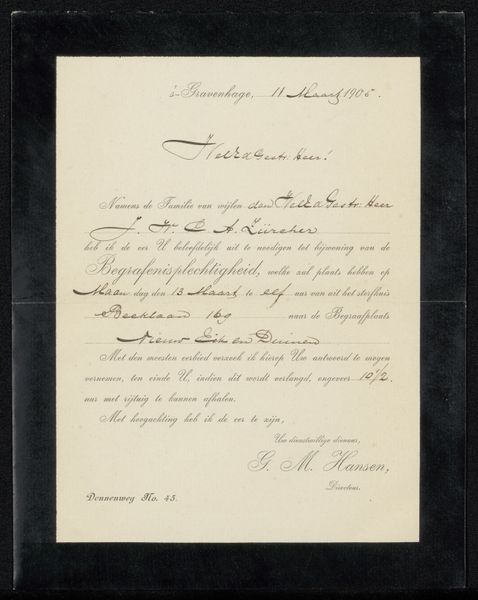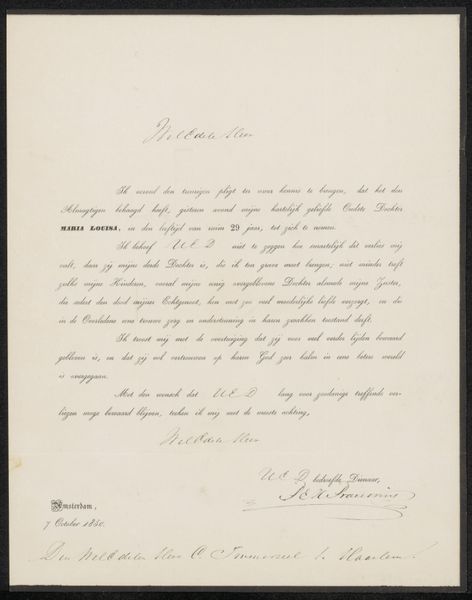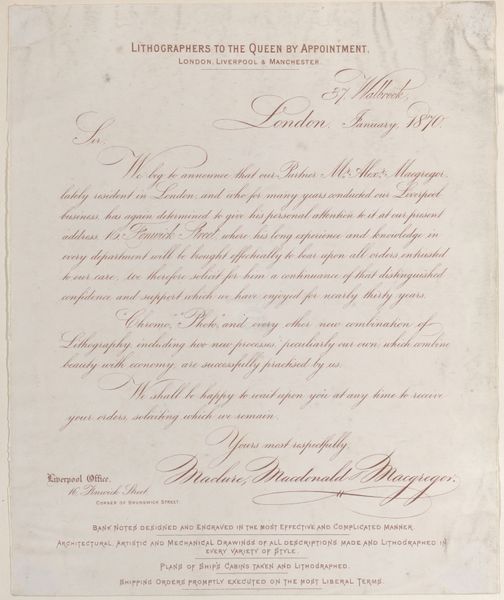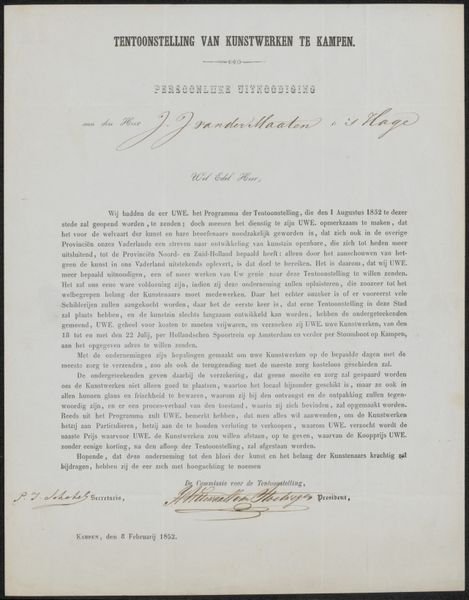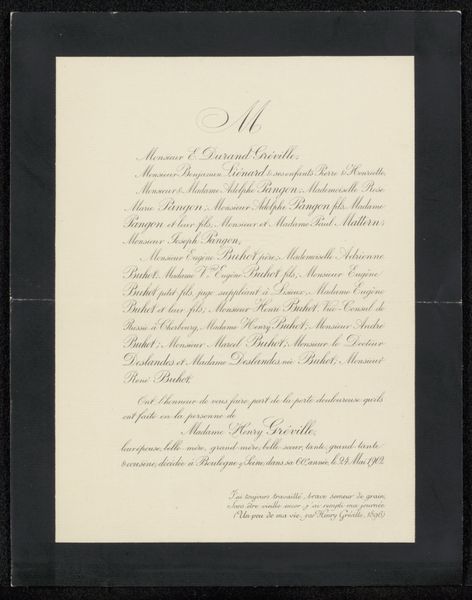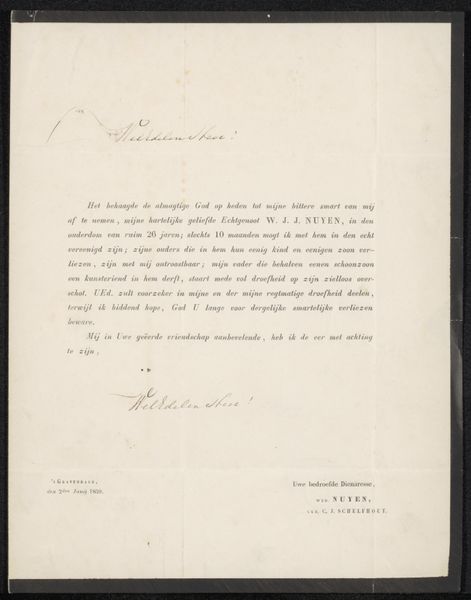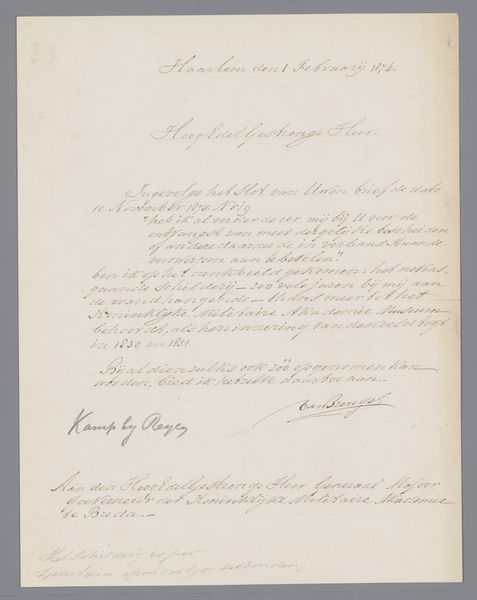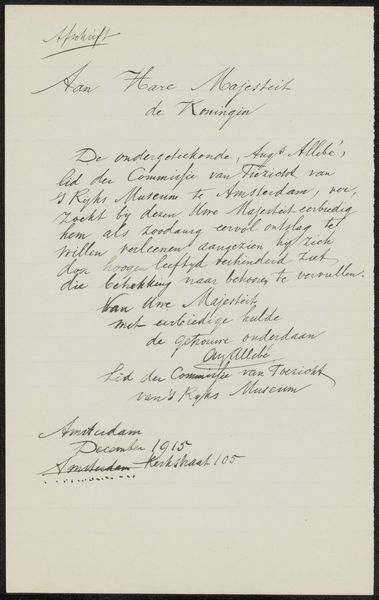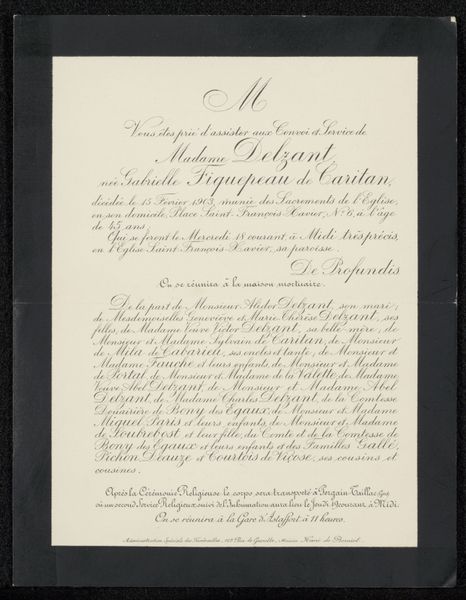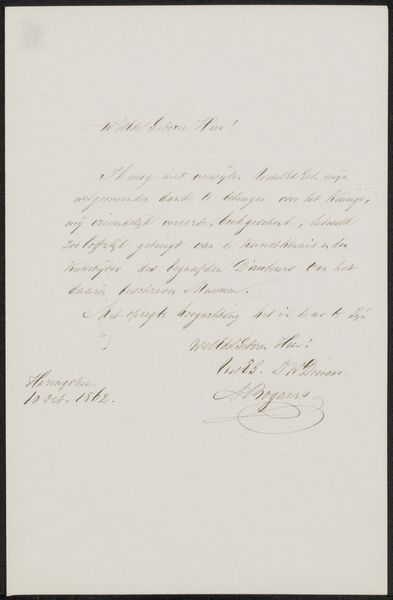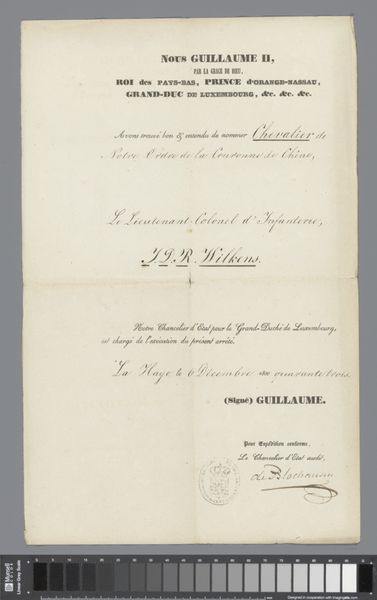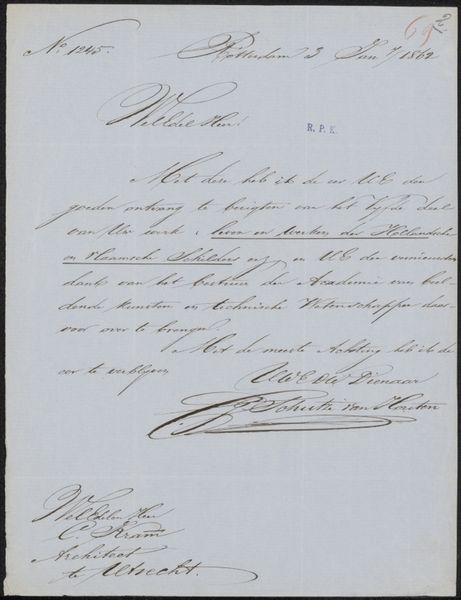
print, paper, ink
#
aged paper
#
script typography
#
ink paper printed
# print
#
old engraving style
#
hand drawn type
#
paper
#
personal sketchbook
#
ink
#
hand-drawn typeface
#
ink colored
#
thick font
#
sketchbook drawing
#
calligraphy
Copyright: Rijks Museum: Open Domain
Editor: This is "Proefdruk aan D. van Willigen" – a print made with ink on paper between 1865 and 1867 by Edouard Taurel. There's a real sense of formality to this piece, from the gothic script to the careful listing of titles. What's most striking to you about it? Curator: Considering the social and institutional context, this piece is fascinating. We see Taurel listing his credentials—member of the Royal Academy, correspondent to the Institute of France. It speaks to the importance of artistic institutions in the 19th century, doesn’t it? Almost like branding himself through affiliation. Why do you think he included all these affiliations on this print? Editor: Possibly to show off his connections to potential clients, perhaps? Make him seem more reputable? It definitely comes across as more about establishing status than pure artistic expression. Curator: Exactly! It highlights the art world's connection to social hierarchies and patronage at the time. Think about it—an artist needed the right endorsements to succeed. What do you notice about the way the handwritten dedication contrasts with the printed text? Editor: The contrast between the formality of the printed portion and the personal handwritten note below really stands out. It almost makes it seem like two separate pieces, one for public consumption, the other intimate. Curator: Yes, that's insightful! The printed section promotes Taurel's professional identity, whereas the handwritten text makes it a gift to a "Zeer Gel: Heer D. van Willigen". A dance between professional aspiration and personal connection in the 19th century art world. What do you think about this dichotomy? Editor: It’s interesting to think about how an artist's reputation and network shaped how their art was received, perhaps even its intrinsic artistic value in that period. I hadn't really considered that before! Curator: Indeed. The print highlights how social capital operated alongside artistic talent and production. I see it as a piece that not only testifies to the artistic achievement of the artist but also underscores the importance of socio-cultural power play. Editor: It really does give me a fresh perspective! Thanks.
Comments
No comments
Be the first to comment and join the conversation on the ultimate creative platform.
